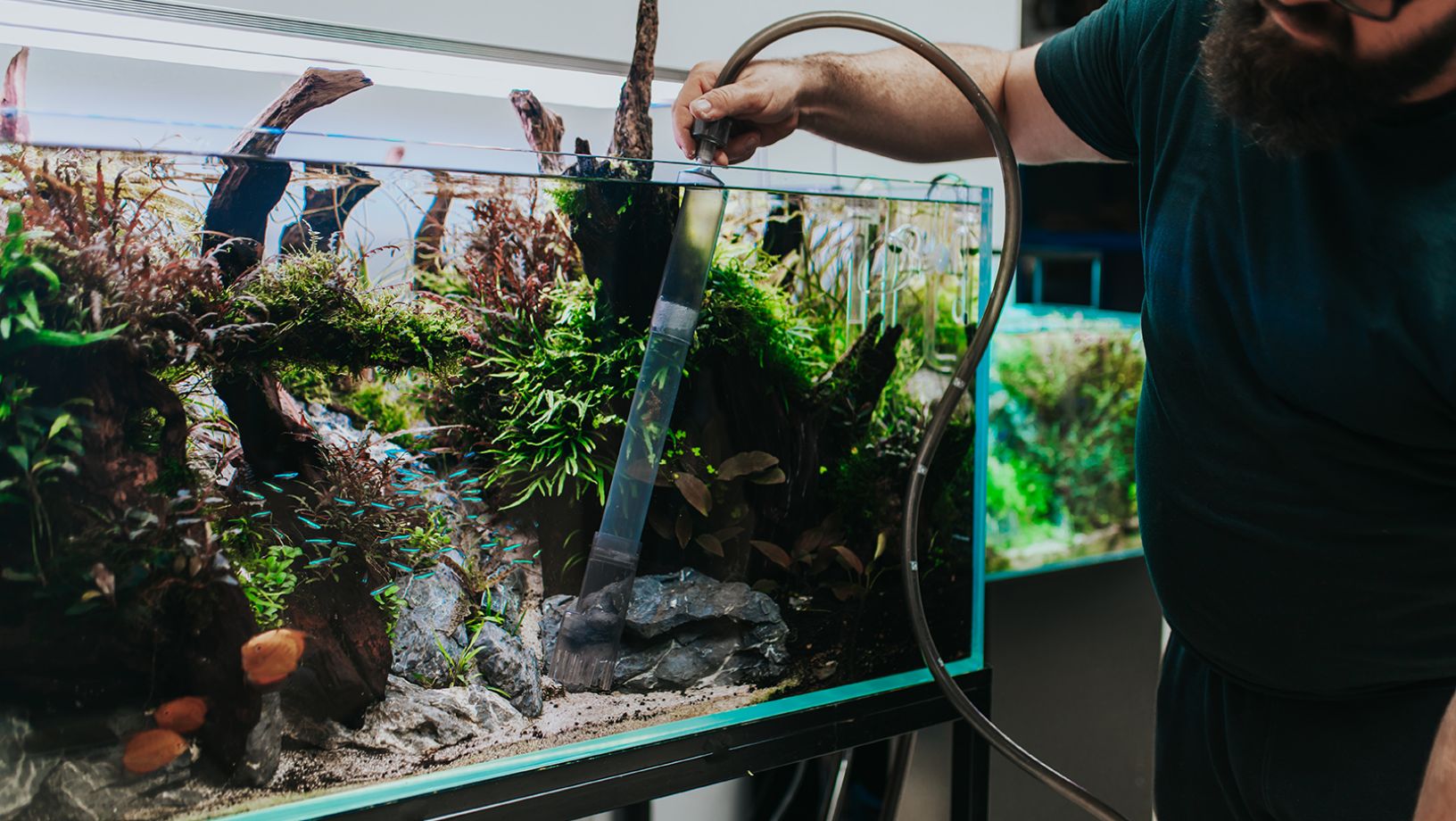How to Grow Aquatic Plants for Your Tank

In this Article
Aquatic plants can really liven up an aquarium or fish tank, giving it a natural feel and adding a touch of beauty. But growing aquatic plants and keeping them alive and thriving can be a delicate science. Don’t worry, once you’re equipped with the right information and a handful of the right fish supplies, you can have an aquarium full of beautiful live plants for your finned friends to enjoy. Learn how to grow aquarium plants and what to do to keep them healthy.
4 Things to Know About Aquatic Plants
- What’s their purpose? Plants help regulate the aquarium ecosystem by helping to remove harmful chemicals from the water such as nitrogen and carbon dioxide.
- How many types of aquatic plants are there? There are thousands of species of aquatic plants!These species can differ in size, shape and more.
- What’s the best habitat for aquatic plants? If set up properly, aquatic plants can thrive in a tropical community aquarium.
- Did you know? Some fish species will eat plants or uproot them. However, most tropical community fish will not harm plants.
How to Grow Aquarium Plants
How do I set up my aquarium for aquatic plants?
Let there be light:
To grow properly, aquarium plants need 8 to 12 hours daily of simulated sunlight. Set up the aquarium near a power source (but out of the real sun). Then use a hood light on the tank to provide illumination. The amount of light your aquarium will need depends on the size of the tank.
The table below shows how much lighting to install or equivalent fluorescent.
Tank Size Lighting
10-gallon Tank
One 15-watt tube
20-gallon Tank
One 30-watt tube, or two 15-watt tubes
30-gallon Tank
Two 20-watt tubes
40-gallon Tank
Two 30-watt tubes
50-gallon Tank
Two 40-watt tubes
85-gallon Tank
Three 40-watt tubes
In addition, there are LED lumen requirements for live plants:
Low Light Plants
40-80 lumens per gallon (10-20 lumens per liter)
Medium Light Plants
80-160 lumens per gallon (20-40 lumens per liter)
High Light Plants
>160 lumens per gallon (>40 lumens per liter)
Leave room for the fish: When considering plants for your tank, don’t choose so many that there isn’t enough room left over for the fish.
**Don’t forget gravel:**Layer the bottom with 2-3 inches of plant specific gravel and a layer of natural aquarium gravel.
Fertilize: Add aquarium-plant fertilizer according to the instructions on the label.
Just add water: Fill the aquarium halfway with water, and add water conditioner to remove chlorine.
Finally, the fun part: Add your plants!
Decorate and accessorize: Add fish furniture, rocks, a thermometer and any other aquarium accessories.
Fill ‘er up: Finish filling the tank with water.
Where should I place plants in the aquarium?
Use foreground plants, which stay short, in the front of the tank.
Use middle-ground plants, which grow about 4 to 10 inches (10-25 cm) tall, along the sides and to leave an open swimming area near the center of the aquarium.
Use the tallest plants to hide the aquarium’s filter tubes and heaters, against the back wall of the aquarium.
How do I keep aquarium water clean?
For optimum water quality, change 10% of the water each week, or 25% each month.
Regular water changes not only prevent the undesirable accumulation of solid wastes, but also remove nitrates and other waste products of the fish and plants.
PetSmart offers free aquarium-water testing. Bring in a sample of your aquarium water and we can test the quality within minutes.
How do I keep aquatic plants healthy?
If you notice any of the signs described below, speak with a PetSmart store associate about the health of your plant:
- Brown spots on leaves
- Pale green to yellowish leaves
- Plants cease to grow and die off
- Rotting bulbs
- Algae in the aquarium
Take care when growing semi-aquatic (that is, not fully aquatic) plants in an aquarium. Semi-aquatic plants do best when their roots are submerged in the gravel underwater, but their tops grow above the water surface.
No matter which type of live aquatic plant you choose, aquatic plant care can be made simple with the right tools, instructions, and a little bit of patience. Happy planting!
Information in this article is not intended to diagnose, treat or cure your pet and is not a substitute for veterinary care provided by a licensed veterinarian. For any medical or health-related advice concerning the care and treatment of your pet, contact your veterinarian.



